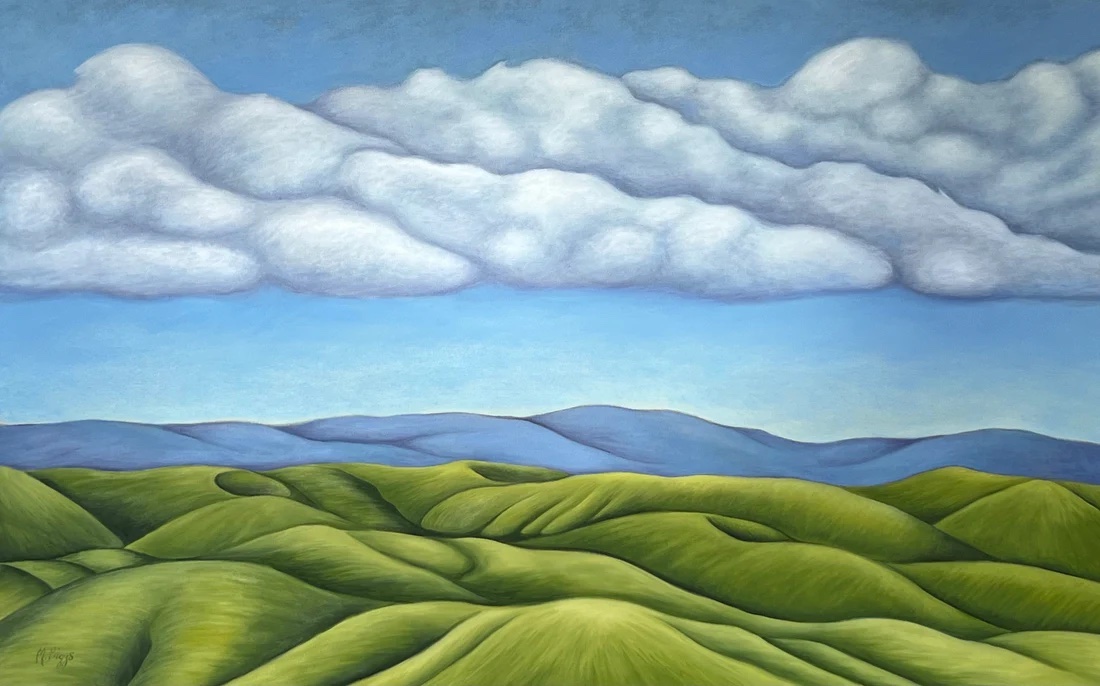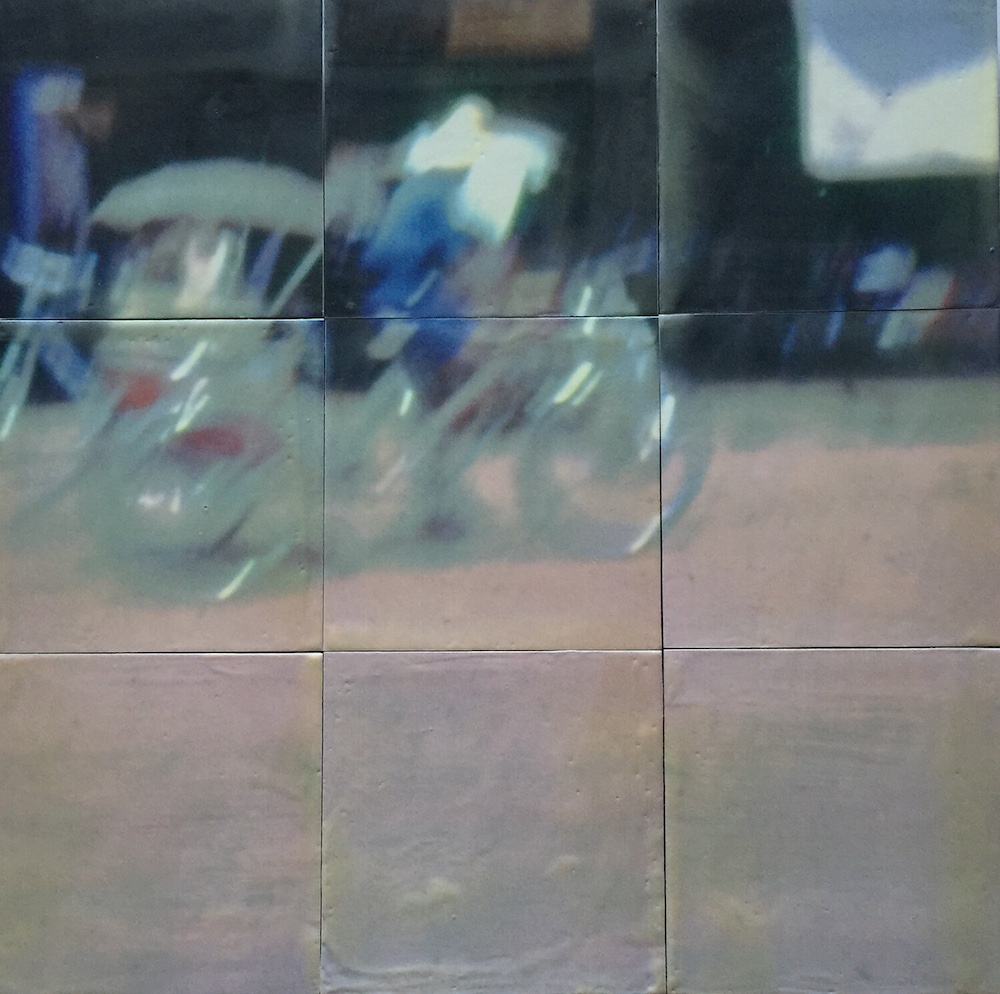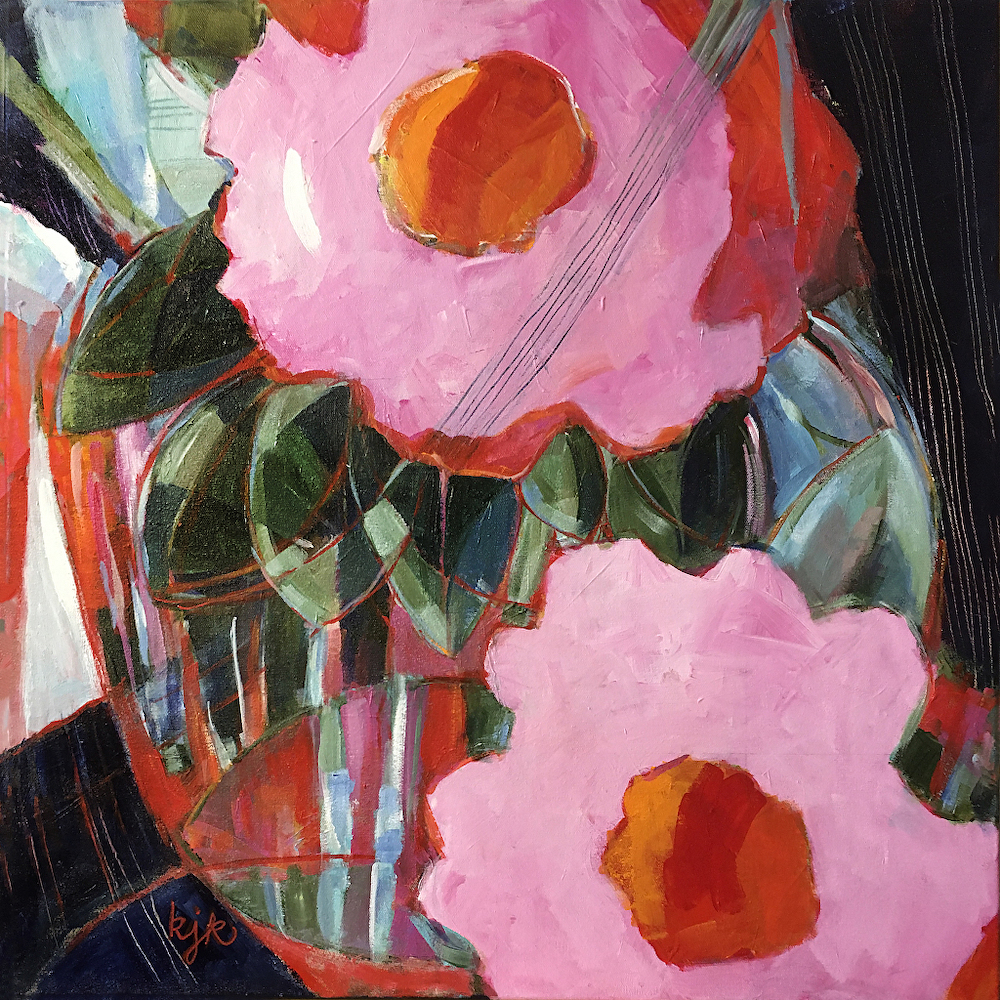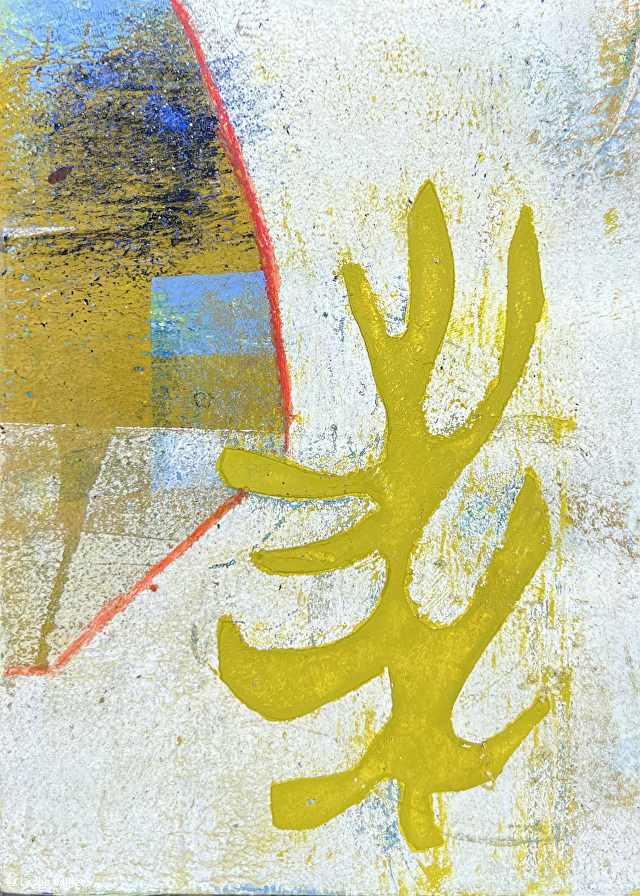By now, you’re probably familiar with Simon Sinek’s famous TED Talk, “How Great Leaders Inspire Action” (2009).
In it, he is evangelizing with a microphone in one hand and a marker in the other—drawing diagrams and emphasizing his points on a large pad of paper.
He is passionately trying to persuade us of his premise, which is this: People don’t buy what you do, or how you do it. They buy why you do it.
I’m not going to analyze that thought in the context of everything else he said because these two sentences are what has stuck in our memory. People don’t buy what you do, or how you do it. They buy why you do it.
I believed his convincing argument, made mostly, as I recall, with the example of Steve Jobs and Apple computers.
I didn’t go back and rewatch the presentation for details. The point is that this has been an ear worm in our heads for almost 2 decades, even though he was primarily talking about traditional large businesses and organizations.
It was hard to disagree with his premise later turned into a book, Start With Why, which, confession, I have not read.
So, yeah, I believed.
Listen
Where I Went Wrong
I started asking artists what their WHYs were. Why do you do what you do? Why do you make art?
Some artists have WHYs. For those artists, this is a question that they can sink their teeth into. It leads somewhere. Their responses might sound like one of these:
- I photograph disappearing ecosystems so that we can remember what they look like.
- I make art to tell stories of my ancestors.
- I make art to call attention to injustices.
But, for most of my artist-clients, asking why they made art wasn’t fruitful. For some, it was debilitating. They couldn’t do any other work until they figured out their WHYs.
Many felt inadequate because they didn’t have a profound answer to the question, Why do you do what you do?
For them—perhaps for you, too—I offer an alternative.
A Reconsideration
Bernadette Jiwa calls herself a storytelling advisor. I heard her on stage back in 2015, and she had a different take—one that I think is much more relevant to artists. She says:
People don’t buy what you do or why you do it. They buy how it makes them feel ...
People buy how it makes them feel. This seems so much more relevant to the purchase of art.
People don't buy what you do, or why you do it.
They buy how it makes them feel.
To be fair, like the Simon Sinek quote, I am also taking Jiwa’s quote out of context. Still, I think it’s worth serious consideration.
If you have a Why, of course we want to know that. It might affect how we feel about it one way or another.
Still, it makes all the sense in the world that people buy your art because it makes them feel something. In turn, this can, ironically, lead to your Why. Here’s how.
This, Interestingly, Leads to Your Why
To find your purpose (your why), all you have to do is remember the connection you are making with others through your art.
We’re told so often that art is a form of self-expression that we’ve come to accept it. It’s so much more than that.
As you may have heard me preach previously, art—in its highest form—is communication. Between you, the artist, and it. Between it and the viewer. And, therefore, between you, the artist, and the viewer.
You have something to say and want others to look at your message.
Your art is incomplete until others experience it. Until they feel.
You are incomplete as an artist until you make these connections through your art. Art loses its power when it’s made and put in storage. You lose your purpose when you don’t make these connections.
This Is Enough of a Why
These connections, I believe, are enough of a Why for any artist. Isn’t it plenty that your art makes someone else feel?
Of course, feelings will vary. Some of the common reactions to art include the following.
Curiosity: I want to know more.
Peace: I am at home here
Excitement: This is why I love to look at art!
Curiosity: I want to know more.
Peace: I am at home here.
Excitement: This is why I love to look at art!
Pride: I am so lucky to own and to live with this.
Acceptance: That’s nice.
Delight: I love this!
Intellectual: I want to figure this out.
Critical: My kid could have done that.
Befuddled: What the heck?! I don’t get this. (And I don’t want to.)
Dismissive: This isn’t for me.
The last three responses are from people who probably aren’t your buyers, but they’re better than no response at all.
At least your work elicits some kind of emotion.
Oh, how truly awful it would be if everyone liked every piece of art you made. It would mean you aren’t pushing boundaries, not advancing the conversation around art.
How You Make People Feel
You can’t control what people feel or that everyone will have some kind of reaction to your art, but you are completely in charge of how you interact in your relationships.
I want you to understand how important these connections are. They are your WHY.
If you aren’t consciously nurturing them—giving them the attention they need—they will wither. You have to show people you care about your work, your future, and your relationship with them.
Your actions can lead people to question your professionalism or they can bolster confidence in you and your work.
If you are nervous, insecure, or intimidated in your dealings, people might begin to think that you don’t know what you’re doing.
If you are forgetful and unresponsive—or disorganized—you could earn a reputation for being difficult to work with.
You earn points from curators, collectors, gallerists, and others when you meet deadlines, respond promptly to requests, and listen to others’ needs.
When you are sharp and knowledgeable, you are more likely to put people at ease.
When you disappear for long periods of time, you lose trust.
Communication
In order to stay visible and relevant, we rely on regular communication to stay in touch, but what is regular?
One thing I have noticed is that some of my clients tend to think they should only email their list when they have something special going on.
Perhaps you want people to attend your opening, sign up for a class, or buy from your new body of work.
Of course you want to tell the people on your list about these things, but it’s impolite to only email when you want something from them.
Instead, I encourage you to love on your list as a habit and with your full heart. Show them, as individuals, you care about them and value their interest in your work.
[ Listen to episode 182 when I talk about the 3 different mailing lists you actually have and why they must be treated differently. ]
My teaching, coaching, and consulting focuses on the human connections that sustain you. We all get busy, but personal relationships are what will move the needle on your art business.
Nurturing relationships isn’t something you do when you think about it or when you feel like it. It takes sustained effort.
Join me for ESSENTIALS FOR ARTIST SUCCESS, , a comprehensive program to help ensure that your business is built on a solid foundation and you aren’t leaving anyone behind.









35 thoughts on “How Your Art Makes People Feel (ep. 184)”
I currently opened my solo sculpture exhibition “Modeling The Subconcious” in Dallas, TX with a body of work that focuses on figurative abstractions. At my opening I allow the viewer to touch and feel the sculptures, inviting a response and dialogue about what they are feeling both consciously and subconsciously. We were breaking all the rules and encoraging the viewer to touch the work and be part of the experience. It was very exciting to see how the viewers reacted and connected to the experience, expressing words about their feelings, what they saw in each sculpture and what a wonderful experience to be included in such an intimate way. It was very touching and emotional for me to have this type of interaction with my viewers and hope they will take the art and experience with them in a new way.
That’s so awesome, Jill! Thanks for sharing that.
Thanks Alyson!
Loved the TEDtalk…this message truly resonates in my work at Wren House Studio as well as in my weekly community studios at Virginia MOCA.
At the museum I work with adults and teens in different programs that I’ve designed. In each studio, when the artists arrive on the first day, I let them know that I actually ‘tricked them’ by writing copy that prompted them to sign up for an ‘art class’. I let them know that I don’t teach art classes. Rather we are all here to share an art studio… coming together to discover and uncover the concept of ‘not making art but Making Meaning’. The explorations and investigations that take place during the semester are rich beyond words. As a result of starting semesters from this WHY/inner place each individual wrestles to bring their deep inner/center concept into form through diverse materials. Dazzling experiences happen…and evaluations like “This changed my life!” come in at the end of our shared journey. Thanks for helping me frame this more consciously by watching this terrific TED. Cheers!
Donna: This sounds fantastic! I am certain you’re a fabulous teacher of meaning-making.
Interesting, Alyson. I was just thinking the other day that Simon Sinek’s TED talk about “the why” doesn’t really apply to products. I loved his talk, and I’m one of those artists who has been going around in circles with it ever since I heard it. When I get an e-mail from Nordstrom, I don’t really care about why they sell what they do. I just want to see what they have that’s new and what applies to me. I also don’t want to read about how their shoes were made. It seems to me that art is similar, with the possible exception that people are interested in artists’ lifestyles. We’re selling a product, so it seems like our marketing messages should focus on the product. I’m still working this out for myself!
Good points, Cassandra. I also don’t care much about why Nordstrom does what it does – and I’m a huge Nordstrom fan.
Yep – lifestyle and art. Don’t leave out the lifestyle part.
This is spot on for sculptor Kevin Caron, for whom I work. His sculptures are not about thinking, about making a political or social statement. His work is about making people feel something, a much needed impetus in today’s world in which we are bombarded by images and sound. Much of the art world has been gripped by a need for meaning. Perhaps things are shifting now, but regardless, Kevin does what he is compelled to do, and people react very positively to this opportunity to feel.
Nice, Mary. And I must point out that thinking or making statements can also elicit feelings. They might not be “feel good” feelings, but they’re valid.
I do not think it is any accident that our word for emotion, feeling, is the same word we use for touch, feeling.
I am constantly seeking ways to expand access to my art through all the senses. We are exquisitely prepared to engage with artwork on all sensory levels. Sensory experience does not divide neatly or clearly from one sense to the next. What we experience through one sense strongly influences how our other senses will interpret the same encounter.
It can present challenges when exhibiting but I have always been happy that I took the time to make the experience more universal. The delight I see in a person’s face makes it worth the effort.
Can’t wait for that museum exhibition, Ann!
I am at a loss for words to express to you how inspiring you, your videos, and all you’ve imparted have been to me. Because of you, I am having a show next week. It took me 60 days (not 30) to get it together, but I did it. I have entered 5 art shows (waiting to hear). I am using social media ( much to my chagrin) to reach out to the “cloud people”. I now have 1400 contacts on LinkedIn and more than that on Facebook, and today got a very moving note from someone who took the time to look at my website. And I am in the process of rewriting my artist’s statement. I am truly out of my comfort zone..sort of feeling like Alice In Wonderland..but this is where I need to be.
The above article and comments are so validating for me. I work from within myself, dealing with emotions (good or bad) and where I am at emotionally while creating the work. And if the piece doesn’t “speak”, it’s not successful. When in a museum, I have to keep my hands in my pockets–I just want to touch the art. So when I display my work, I encourage the viewers to touch it so that they can connect more fully with the piece and the energy that went in to creating it. In December a woman in Virginia bought three of my newest pieces. And she lets me know on a regular basis how happy they make her feel. That, for me, is success.
Thank you for welcoming me into your Art Biz. You are a very special woman that, I hope one day, I will have the opportunity of meeting in person.
Okay, Karen. You made me cry. Really. I can’t tell you how lovely it is to know that I have helped you.
Thank you for being here! I hope we get to meet, too.
Oh! Congratulations on taking these bold steps that are out of your comfort zone. What an inspiration! I may have to share your words in my newsletter at some point.
While attending Art History classes at CU Boulder the one thing that I learned was that art requires a language that others can understand and be enticed by. Without that language it can be compared to a Frenchman speaking to a German and no one understands each other. The language is first created between the artist and the piece of art they are working on. That language is then transmitted to the viewer to entice them into responding to the art. Once the language has been established with the viewer, they then can understand what the artist has created for them to see. Understanding this has helped me tremendously in how and why I create.
Interesting, Bill. Do you believe that the language between artist and artwork is the same as between artwork and viewer?
This is exactly what I needed to hear. Right now I am focusing on creating a strong/coherent body of work, but recently someone (the person who referred me to you, in fact) told me I need to at least start thinking about trying to show my work in the non-virtual world. This is very intimidating to me, as I live in a big city (intimidating art scene) and I’ve also become quite a recluse (and I honestly like it that way). I am really hoping to be able to work with you more closely once I feel more confident about my body of work, as I am going to need a lot of help taking those next steps!
I look forward to working with you, too, Mary. Please tell your friend Thank You from me.
(Sorry for delayed reply. I don’t know how I missed this earlier.)
I happen to believe that it is very important the we know our “why”. In fact, I think it’s a cop out if we don’t understand our why or we don’t strive to figure it out. It can take time to do the latter and it can change over time.
By knowing our why we can then be more effective in conveying the emotion we want to communicate.
Here is a compelling video that beautifully explains what I mean. I know that I want to paint like the his second rendition of “Amazing Grace.”
https://www.youtube.com/watch?v=LZe5y2D60YU
Carol: I am happy you know your Why, but I don’t want artists to be completely paralyzed if they can’t articulate theirs.
I just hope what I wrote above helps them find it.
Inspiration is what i need
Great article and nice comments. I totally agree and it took me also a little while to understand the why of my paintings… showing my art, getting feedback, thinking about it helped me to figure it out.
I am a positive person and believe that what we see influences what we feel. I choose to focus on beauty of things and to paint happy and peaceful “moments in time” to convey these feeling to my viewers.
thanks Alyson!
Really nice, Laurence. And I love your work.
This article on how art makes people feel really got me thinking! So many possibilities. Here are some that I came up with to add to the list:
Engaged/drawn into
Energized/animated/invigorated
Inspired/invigorated
Enchanted/captivated/dazzled/enthralled/mesmerized/fascinated
Cheered/strengthened/fortified/happy
Nourished/sustained/supported/sense of well-being/safe
Consoled/calmed
Indulged/spoiled/pampered
Surprised/intrigued by
Enlightened/educated by…
Transported by/have a sense of wonder
Nostalgic/treasuring
Honoring
Admiring
Amused/tickled
Provoked!
Satisfaction from the conveyance of values
Satisfaction from the symbolizing of something
Satisfaction from the transmission of meaning or content
Sense of completion (e.g., adding something that “finished” or “completes” a space)
Making the ineffable tangible
I would hope my art provokes curiosity, delight and fascination, and helps the buyer create a space that makes his/her house/work into a place of greater comfort and beauty.
Love this list, Barbara! Just shared on my FB page.
I love this mind shift around how to find your why! How art makes people feel actually feels easier than figuring out my why. Or at least, closer to figuring it out my why. Thanks for the insight!
It’s a path to your why, Erika.
Thanks so much for your excellent article and insights Alyson. (Wonderfully timed for Valentine’s day!)
Over the last few years, collectors and viewers have been telling me that my art is inspiring. I had to hear that a bunch of times before it soaked in.
The thing I like most about this is that I am totally inspired and fueled by them! These collectors and friends are fascinating people who have accomplished such amazing things. I love it that art provides this deeper connection between us.
Isn’t that cool, Holly? Hold onto that.
Hearing how my art makes people feel is one of the best things about being an artist for me. I have had collectors email me years later (usually in response to an email I have sent out) telling me this. Here is an excerpt from one I got recently … “I bought a Buddha face from you in downtown Sacramento and I look at it daily and it brings me so much joy and peace. You’re an Amazing artist and I’m so thankful to have one of your pieces.” Knowing she looks at this daily is such an honor for me. I try to think about this when I talk with my clients and when I create my art, but it is so easy to get caught up in the day to day and the business side of art. Reading this article was a great reminder to remember this…and makes me want to connect with more of my current and future collectors! Thanks Alyson!
That’s awesome, Angela! It is also a reminder for us to tell other people how they make us feel. Spread the love.
All those articles are helping me to organize my way to deal with my artwork since I’ve decided to accept Art as a profession and at the same time as my mission in this world. A mission to help people through beauty.
So you inspire and encourage me to believe that it is possible.
Thanks very much Alyson.
Thanks for hanging out with us here, Ana.
When I started answering this I thought I had two why’s but as I wrote it, I realised they were just two sides of the same coin:
Making art constantly requires me to develop my courage and self-awareness. Through the process, I learn new ways to help my coaching clients with their creative practice, and with the final product I hope also to inspire others to greater courage, self-awareness and self-expression.
Thanks for provoking me to clarify that, Alyson!.
I love it, Cherry.
Thank you, Alyson, for this timely article. The insight you offered, and the comments that followed, will help me come to terms with my search for why. If I may borrow an old saying, I have been known too look too hard and not see the forest for the trees. Thank you.